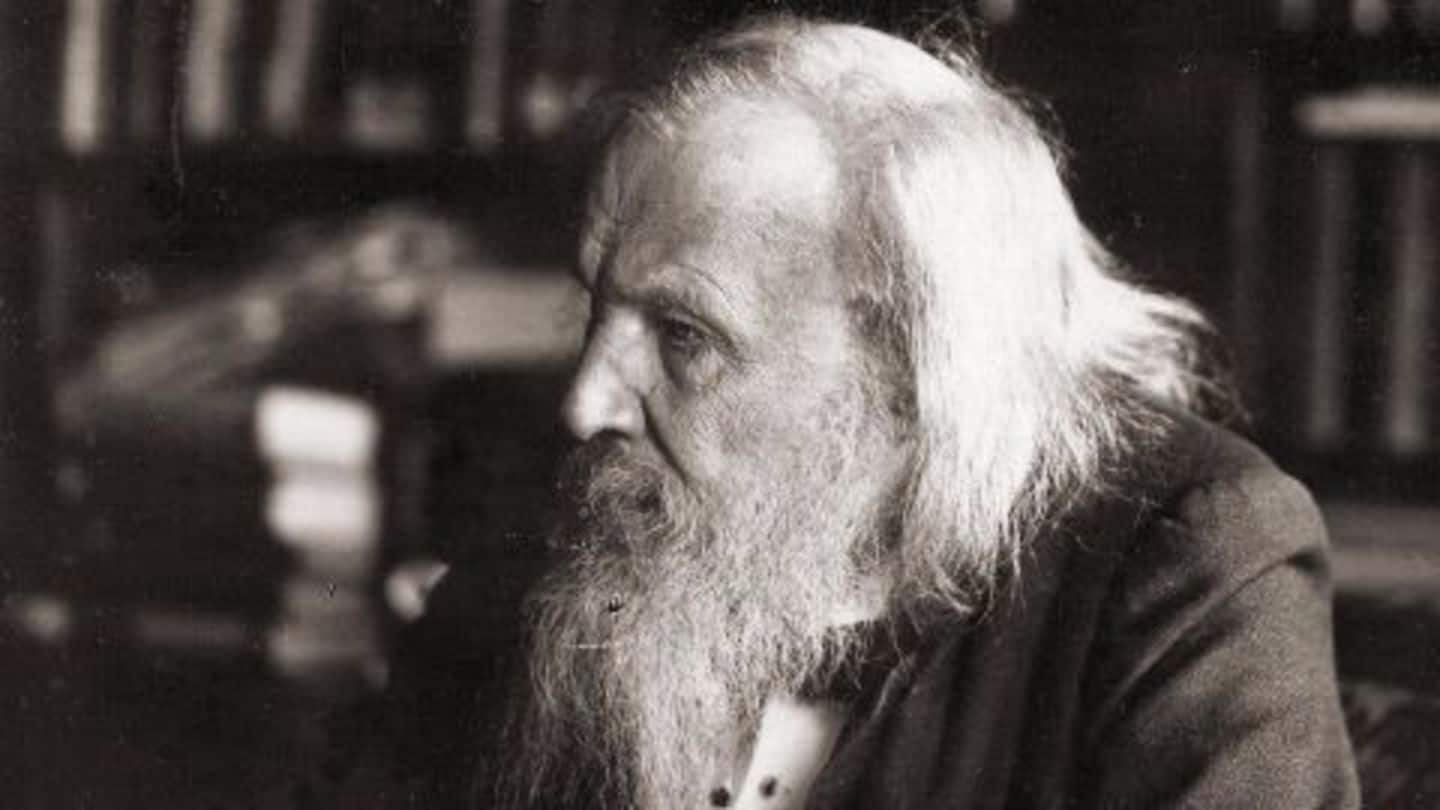
Google doodle for 'Father of Periodic Table'
What's the story
Google commemorated the 182nd birthday of Dmitri Ivanovich Mendeleev, the Russian chemist and inventor with a doodle.
Mendeleev is known as the 'Father of Periodic Table'.
He was the one who formulated the periodic law, later leading to the grouping of the 63 elements called the periodic table.
Dmitri produced his extended version of the periodic table by leaving spaces for elements undiscovered.
1869
Mendeleev devises the periodic table
The periodic table was devised in 1869 by the Russian chemist Dmitri Mendeleev (1834–1907).
Before him, scientists like Döbereiner, Newlands, de Chancourtois, and Meyer, had come up with alternative proposals to organize the known chemical elements.
Mendeleev's success was because he reserved empty spaces in his classification for the elements undiscovered at that time.
The discovery of gallium and scandium validated his predictions.
Correct Predictions
Other significant scientific breakthroughs
Not only did he reserve places for undiscovered elements, Mendeleev put the existing elements in their correct places in the table.
In certain cases, the relative atomic mass had been incorrectly calculated by others which he fixed correcting the relative atomic mass.
Mendeleev also predicted the attributes of 8 elements and their compounds that were yet to be discovered.
1955
A synthetic element named after Mendeleev
In 1955, a synthetic chemical element with the symbol Md (formerly Mv) and the atomic number 101 was created and named Mendelevium after Dmitri Mendeleev.
Mendelevium was created by blasting einsteinium with alpha particles.
It was discovered by scientists from University of California, Berkeley led by Stanley G Thompson and assisted by Albert Ghiorso, Glenn T. Seaborg, Gregory R. Choppin, and Bernard G. Harvey.
2 Feb 2007
Spain issues stamp on Mendeleev's 100th death anniversary
Spain issued a commemorative stamp to mark the 100th anniversary of Mendeleev's death on 2 February 2007.
It was designed by Javier García Martínez, a professor of inorganic chemistry.
The stamp depicted with varying colors the 4 principal neighborhoods in the periodic table that divides the elements by their electron arrangements and also showed white boxes or 'holes' for undiscovered elements.
Do you know?
A crater named after Mendeleev
Other than having several memorials to his name, Mendeleev also has a crater on the moon named after him.